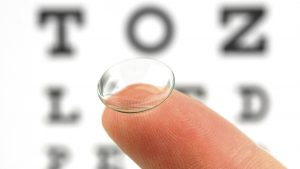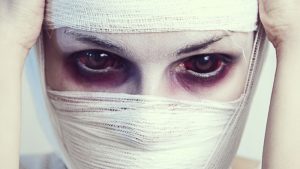Specs to contacts – what happens to BV?
Changing a myope from spectacle to contact lens wear can alter their binocular vision (BV) function. The myope reading through their spectacles experiences base-in prism at near, as demonstrated in the image above, which moves the image further away and decreases vergence demand.
















